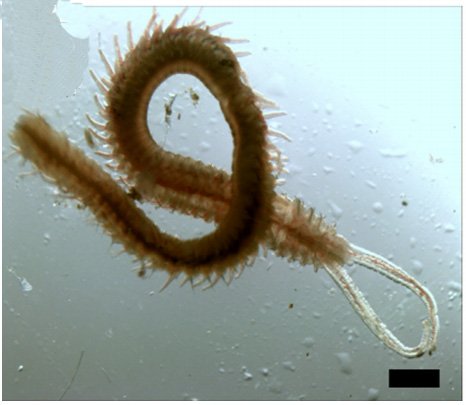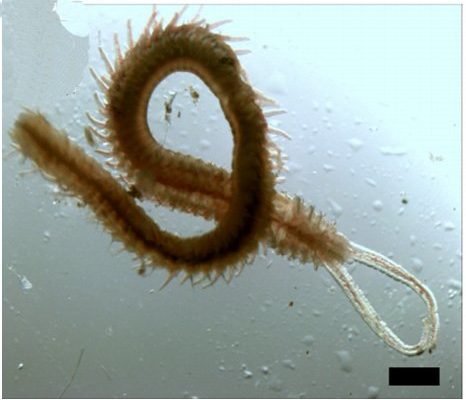
Imagine a bustling city where every little worker bee helps make the whole system run smoothly. That’s exactly how mudworms function in their ecosystems. Found primarily in aquatic environments, these unassuming animals play vital roles in nutrient cycling, sediment stabilization, and supporting aquatic food webs. So, grab a cup of coffee, and let’s dive deeper into the world of mudworms and explore why they matter so much!
What Are Mudworms?
Mudworms belong to a group of segmented worms known as oligochaetes, often found in the muddy substrate of freshwater and marine environments. Unlike their more famous relatives, the earthworms, mudworms hold a unique position in waterways and coastal ecosystems. You might be wondering, “What makes them so special?”
First off, mudworms are usually quite small, typically ranging from a few millimeters to a few centimeters in length. Their bodies are long and slender, and they often have a segmented appearance that looks a bit like an earthworm in miniature. These little guys, while not the most glamorous creatures, are fascinating in how they interact with their environment.
There are many species of mudworms, and they can be seen in various habitats—from ponds and marshes to estuaries. They thrive in areas with plenty of organic matter and are known for burrowing into the mud, where they can be safe from predators. Their lifestyles are like secret agents, working hard underground while remaining mostly unnoticed.
Nutrient Cycling and Soil Health
You might not realize it, but mudworms are essential players in nutrient cycling, which is crucial for healthy ecosystems. As they burrow through the mud, they consume organic matter like decaying plants and other microorganisms. Think of them as nature’s recyclers—transforming waste into vital nutrients for the ecosystem.
When mudworms digest this organic material, they break it down and release essential nutrients back into the environment. This process enriches the sediment, making it more fertile. Plants can then absorb these nutrients, which helps them grow. Healthy plants, in turn, support herbivorous animals, creating a rich tapestry of life.
Moreover, the burrowing activity of mudworms helps aerate the soil, allowing water and oxygen to reach plant roots more easily. Without these little creatures, nutrient cycling could slow down, leading to less fertile soils and a decline in plant health. So, the next time you see a patch of flourishing greenery near water, remember that mudworms might be quietly working hard below the surface.
Supporting Aquatic Food Webs
In any ecosystem, food webs are like intricate puzzles where every piece affects the others. Mudworms are a crucial piece of the aquatic food web, acting as a food source for a variety of animals. Predators such as fish, birds, and even some mammals rely on mudworms to meet their nutritional needs.
When mudworms populate an area, they can provide a steady food supply, which is especially important for juvenile fish and other young aquatic creatures. In this way, mudworms not only contribute to the health of their environments but also assist in sustaining local fisheries.
Without mudworms, many aquatic species would struggle to find enough food, which could lead to a collapse of the food web. That shows just how interconnected everything is in nature; when one piece gets removed, it can affect the whole system.
Water Quality and Sediment Stabilization
Have you ever noticed how muddy water can seem dirty and uninviting? Well, mudworms help improve water quality in their habitats. As they burrow and move through the sediment, they play a role in sediment stabilization. This process is essential for preserving habitats like wetlands and estuaries.
By breaking up compacted sediments, mudworms help prevent erosion and maintain the structure of the aquatic environment. This is crucial because it supports the growth of other aquatic plants and organisms that rely on stable substrates to thrive.
Additionally, their activity helps to control and filter pollutants, which keeps the water cleaner. So, while they may seem small and insignificant, mudworms contribute to healthier waterways. In essence, they act as a natural filtration system, ensuring that ecosystems can flourish.
Indicator Species for Ecosystem Health
Here’s something interesting: mudworms can be seen as indicator species. This means that their presence or absence can tell scientists a lot about the health of an ecosystem. When researchers study mudworm populations, they can gain insights into water quality and environmental changes.
If mudworms are abundant, it typically indicates a healthy ecosystem with good water quality and enough organic matter. On the flip side, a decline in mudworm populations might signal pollution or habitat loss. This makes them important for conservation efforts and environmental monitoring.
By understanding the status of mudworm populations, ecologists can better assess and potentially restore habitats that are struggling. This aspect of their ecology highlights how interconnected all species are and emphasizes the ripple effects that can result from environmental changes.
Conservation and Protection Efforts
Unfortunately, mudworms face threats just like many other species today. Pollution, habitat destruction, and climate change can negatively impact their populations. Protecting these creatures is crucial not only for their sake but also for the health of entire ecosystems.
Conservation efforts often focus on preserving aquatic habitats—like wetlands and estuaries—where mudworms thrive. When these areas are kept healthy and intact, mudworms can continue to support the intricate web of life that depends on them.
Community education and engagement play a big role in conservation efforts. Raising awareness about the importance of mudworms can help people appreciate the often-overlooked creatures in their environment. After all, protecting one species often means protecting many others.
Final Thoughts: The Unsung Heroes of Ecosystems
Mudworms may not be the first creatures that come to mind when you think of the animal kingdom, but their ecological importance is undeniable. They’re like the unsung heroes working behind the scenes, keeping ecosystems balanced and healthy. From nutrient cycling to supporting food webs, they play vital roles that help sustain life.
By understanding and appreciating the role of mudworms, we can foster a deeper respect for all living things and the environments they inhabit. Protecting these small but mighty creatures ensures the health of our waterways and the diverse array of life they support. So next time you come across a muddy waterway, take a moment to think about the mudworms doing their work beneath the surface. They truly deserve more recognition in the natural world!

